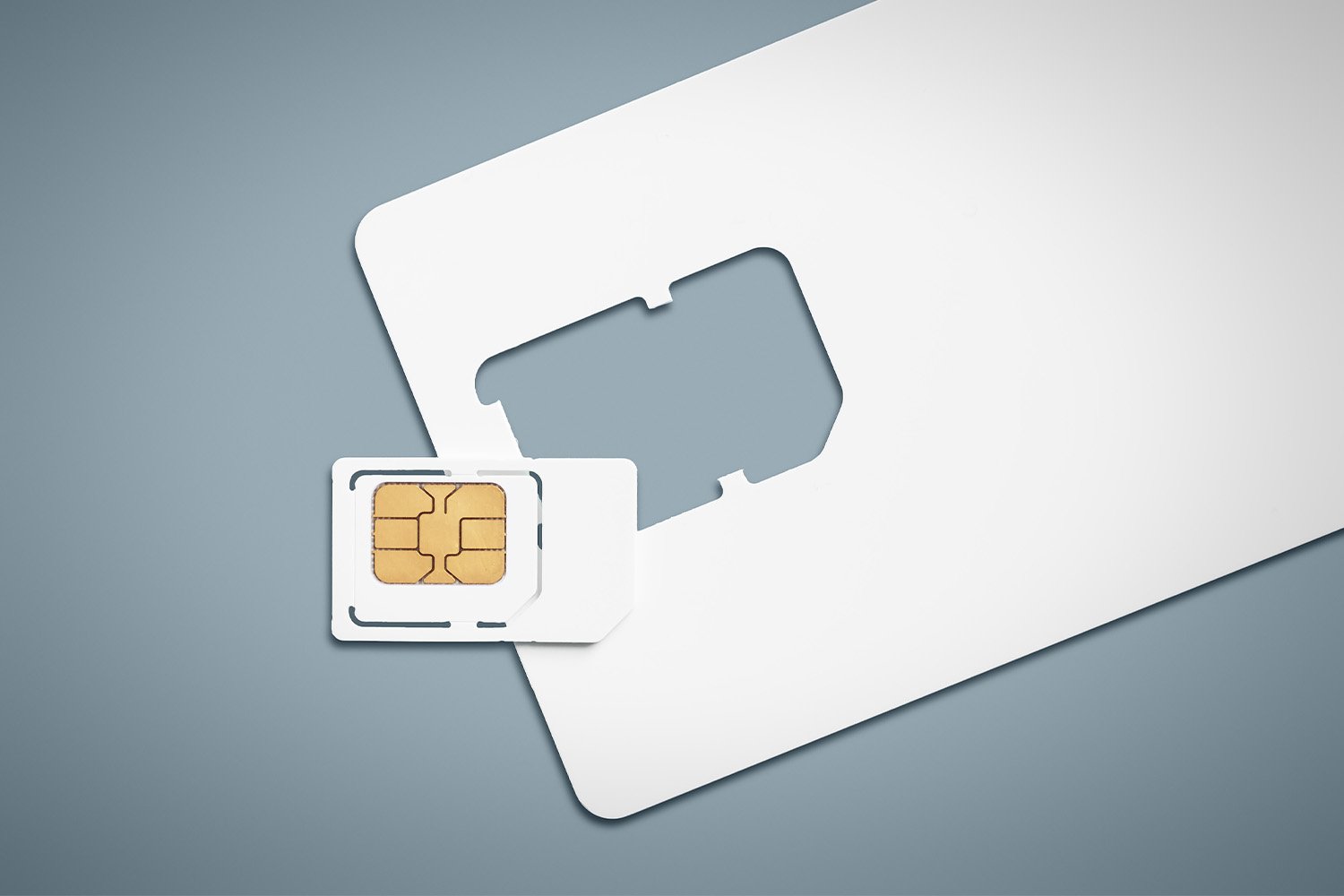Do I Need a New Sim Card for 5G?

5G is almost here! As the major US carriers expand 5G coverage across the US, you might be wondering how you can take advantage of this new, ultra-fast network.
The good news is that it’s easier than you might think. In fact, almost all of the heavy lifting in making the switch has already been done by the major US carriers over the last seven years. Switching to 5G is optional, but if you want to make the switch before it becomes the standard, you barely need to lift a finger.
What Is 5G?
“5G” is industry and colloquial shorthand for “5th Generation.” 5G coverage is the most recent generation of cellular networks. If you own a mobile phone, regardless of your carrier, you’re connected to a cellular network.
Right now, your cellular network is most likely a 4G LTE network. As we speak, 5G cell towers (also known as “nodes”) are being installed across the country in both urban and rural areas, though the 5G works best in highly populated urban areas. Soon, you’ll likely have the option to switch to 5G no matter where you live.
The best thing about 5G is its speed: 5G offers super fast download speeds — nearly four times faster than 4G LTE. Additionally, 5G is congestion-resistant; it has the capacity to handle more devices at any given time without slowing upload or download speeds. 5G makes this possible by increasing network bandwidth, such that the network can process almost one thousand times as much mobile data per second as 4G LTE.
How Does 5G Work?
5G relies on a series of small, locally placed “towers.” “Towers” is what we’ve come to call the things that get us onto the cellular network. This name was apt for 4G towers, which were the size of trees, but the name becomes somewhat misleading when we talk about 5G towers, (which are only about the size of a large umbrella). We’ll start calling them nodes instead. Imagine a node placed on every other streetlight in your city — you’d barely notice it was there.
The short intervals that the data travels between each node is the thing that characterizes 5G on a technical level. 4G LTE can transmit data across very great distances, so their larger towers could sit miles and miles apart. Since 5G utilizes shorter wavelengths, it demands shorter distances between towers.
The Three 5G frequencies
- The fastest is called Millimeter wave (mmWave) or high band. The mmWave spectrum is highly susceptible to interference, which makes it ill-suited to traveling long distances. Interference can come in many forms, including buildings or inclement weather; therefore, engineers place the nodes closer together to minimize the loss of signal. Even unobstructed mmWave signals can only reach users one city block or less away from their node.
- Medium band is the least common of the three, yet it may also be the most useful. It’s called a spectrum for a reason, and there are more wavelengths that fall into this mid-band category. The medium band range is waves with frequencies from 1 to 6 GHz. It borrows qualities from both high and low bands to bring you high speeds and a wide distance. It’s not as fast as mmWave, nor as broad as low-band, but it strikes the right balance between the two.
- Finally, there’s low band, which is also known as Sub-6GHz. A 5G device on a low-band network could maintain connectivity from hundreds of miles away from the nearest node because the lower wave frequency means a greater distance between nodes. Low band is similar to 4G because it relies on lower-frequency bands to provide broader coverage. The speeds of 4G LTE and low-band 5G are comparable.
The national 5G network will be composed of all three types of 5G. This way, people in densely populated areas won’t experience interruptions to their service, and people in sparsely populated areas will experience faster speeds.
As a 5G user, you’re not tethered to one frequency, and your device will automatically utilize the best one available to you at any given moment. You won’t need to click anything or sign up for anything as long as you’re using a 5 G-compatible device.
What Is a Sim Card?
SIM is an acronym for Subscriber Identity Module. It’s basically a little badge that says “Here’s who I am, I have paid to be here” when you try to join a network. This is why phones without sim cards can’t get any cell signal despite being in range and having the necessary hardware — it’s like they’re trying to get on a train with no ticket to ride. The sim card is your ticket. Without a sim card, you (the “subscriber”) and your device would appear just like every other device in range of the network that had not paid for the service.
Activating your sim card is what allows you to access the wireless plan you’ve paid for. Your sim card links your account to your device. The sim card also keeps track of your usage data and your account details, such as your address, type of plan, number of texts sent, etc. This data (aside from SMS messages) is not stored directly on the sim card; rather, the sim card assists in getting that data to the provider’s database where it can be stored safely.
Speaking of safety, sim cards also provide a great security feature. Because the sim card is able to identify specific users, it can ensure that your calls are secure from one end of the network to the other. That means you can rest assured that no one is eavesdropping on your communications.
The sim card is able to encrypt all of your data between your device and the network, including your text messages. The sim card stores your device’s unique encryption and decryption key, and this unique code is another way that your phone is identified by the network.
Do I Need a New Sim Card for 5G?
Before you determine if you need a new sim card, first you should determine if you need a new device entirely. Not all cell phones are 5G compatible. This can be done with a simple Google search of your phone’s make and model, but here are some general guidelines
The first cell phones with 5G compatibility were from Motorola and LG around 2018. Samsung jumped online in 2019 with the Samsung Galaxy S10 5G; any Samsung phones released before that device are not 5G compatible. Finally, it was not until 2020 with the iPhone 12 and later that Apple began incorporating 5G compatibility into their devices. iPhones released before the iPhone 12 are not 5G compatible.
Let’s assume that you’ve checked, and you do have a 5 G-compatible smartphone. Hurray! Now we can revisit the earlier question: Do you need a new sim card to access the 5G network?
The short answer is no, you do not need a new sim card to upgrade to 5G if your current sim card is working on 4G.
Sim Card Technology
Way back when we all upgraded to 3G, sim card technology changed so that from then on, any sim card could be compatible not only with the networks that came before it but with any network that may follow it as well. While 5G-specific sim cards do exist, they are not strictly necessary.
However, some major carriers are asking users to upgrade their sim cards to 5 G-specific sim cards anyway. Why? The answer is something called Stand Alone 5G. Basically, T-mobile offers a premium 5G service called SA 5G that promises enhanced coverage and uses only the most modern network. Luckily, T Mobile is offering the upgrade to a new sim card for free to customers on their 5G compatible plans. AT&T and Verizon both offer 5G plans, but do not ask or require you to upgrade your sim card.
Does Red Pocket Offer 5G Compatible Sim Cards?
Yes! Red Pocket’s sim card is compatible with 5G networks. If you still need to upgrade your device before making the switch to 5G, Red Pocket also offers great deals on 5G-compatible devices.
Just like Red Pocket’s 4G LTE plans, you’re not bound to use only one carrier’s network. When you purchase a new wireless plan from Red Pocket, we’ll mail you a sim card along with instructions for installing it yourself.
Activating your sim card is easy and fast with our online portal. As always, Red Pocket does not subject you to any activation fees. So what are you waiting for? Red Pocket makes it super easy and affordable to get online with 5G.
Sources:
You might want to turn off 5G on your phone | Popular Science
What is 5G? Definition, Benefits and Use Cases | Tech Target
Do I Need a New SIM Card for 5G? All Your Questions Answered | Beebom
Curious Kids: How do SIM cards make a phone work? | The Conversation
When did 5G come out? The long, complicated history of its release | Digital Trends

